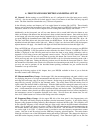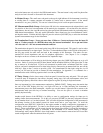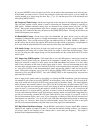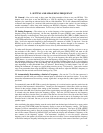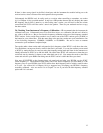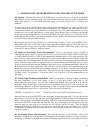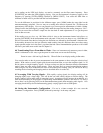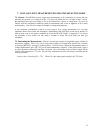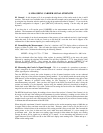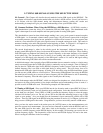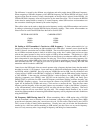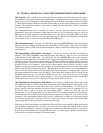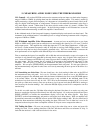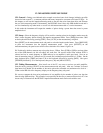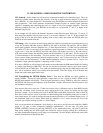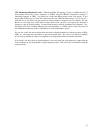16
8. MEASURING CARRIER SIGNAL STRENGTH
8.1 General - In this chapter we’ll do an example showing the use of the carrier mode in the A and B
versions. This mode is not available in the C version but this example can be performed with a C version
by using the low distortion selective mode by using the procedure described in chapter 7. If you saved the
C models configuration in chapter 7, press [RECALL] followed by entering 1 on the entry sub panel
keyboard.
If you have the A or B version, press [CARRIER] on the measurement mode sub panel under SSB
channels. The instrument will default to the 20Hz filter but to aid in tuning a carrier you can select a wider
filter then return to the narrow filter for the actual level measurement.
Let’s do an example of on the air measurement of the accuracy of our outboard receiver’s signal strength
meter that reads in S units of 6db per S unit up to S9, then db’s over that level and is suppose to be
calibrated for a 100uv antenna input to give a meter reading of S9.
8.2 Normalizing the Measurement – Now let’s calculate a db.775V display offset to reference the
display to 100uv or .0001 volts. This will make the display read 0db when the input signal is exactly
100uv, .0001 volts. Calculate the offset using the following formula.
OFFSET = 20 log (Vr/.775) = -77.79db Where the new voltage reference Vr = .0001 volts
Enter the calculated offset into display offset register by pressing [OFFSET] on the entry sub panel,
followed by entering the absolute offset number on the entry keyboard of 77.79, then pressing [-db]
followed by [MEAS CONT]. Now activate the offset calculation by pressing [OFFSET] on the
measurement/entry panel to turn the button’s light on and the O annunciator behind the dbV.775 units.
8.3 Measuring the Carrier’s Signal Strength – This is an example of a procedure to measure a
signal’s strength in db over or under a normal S9 level of a receiver’s strength meter level calibrated for
100uv signal equal to a S9 reading.
Tune the HP3586 to exactly the carrier frequency of the 40 meter broadcast carrier on our outboard
receiver using any of the previous frequency tuning methods. If you initially tuned the carrier using the
SSB detector, set the measuring range for 10db and the range upper limit for automatic to be able to hear
the signal. Because of possible carrier fading, be sure averaging is on; press [AVE] on the
measurement/entry sub panel. Once you have the signal in the filters pass band lock onto it using the
counter and transfer it to the frequency register using the methods previously described in chapter 6.
Switch back to the 20Hz filter if you used a wider one for tuning the carrier and to the 100db measuring
range for less noise error and more stable readings.
The HP3586 should now display db readings close to that of the receiver’s S meter if the S meter is in its
db range over S9 and if the reading on the instrument is positive indicating a reading over the 100uv S9
value. For –db and S meter readings below S9, just divide the absolute –db value by 6db and subtract that
number from 9 to get the S unit value between 0 and 9. Don’t be surprised if you receivers S meter reading
is different than the measurement of the HP-3586
When doing this experiment I found it instructive and fun to also set the measuring range at 100db but set
its upper limit for entry and then enter 0db as the limit. However, when I tried to set the limit at 0 it
defaulted to +1dbm because of the resolution of this setting wouldn’t allow exactly 0db. But I wanted the
analog meter to be close in dbm and 1db won’t make that much difference, it’s close enough for
government work. Now the meter was reading signal strength in dbm where the display was reading
average db above S9 for signals on an AM net on 75 meters. It was interesting and instructive to see
signals between S8 and 25db over S9 on the LED level display were running from –75dbm and up to –
50dbm on the analog meter.



